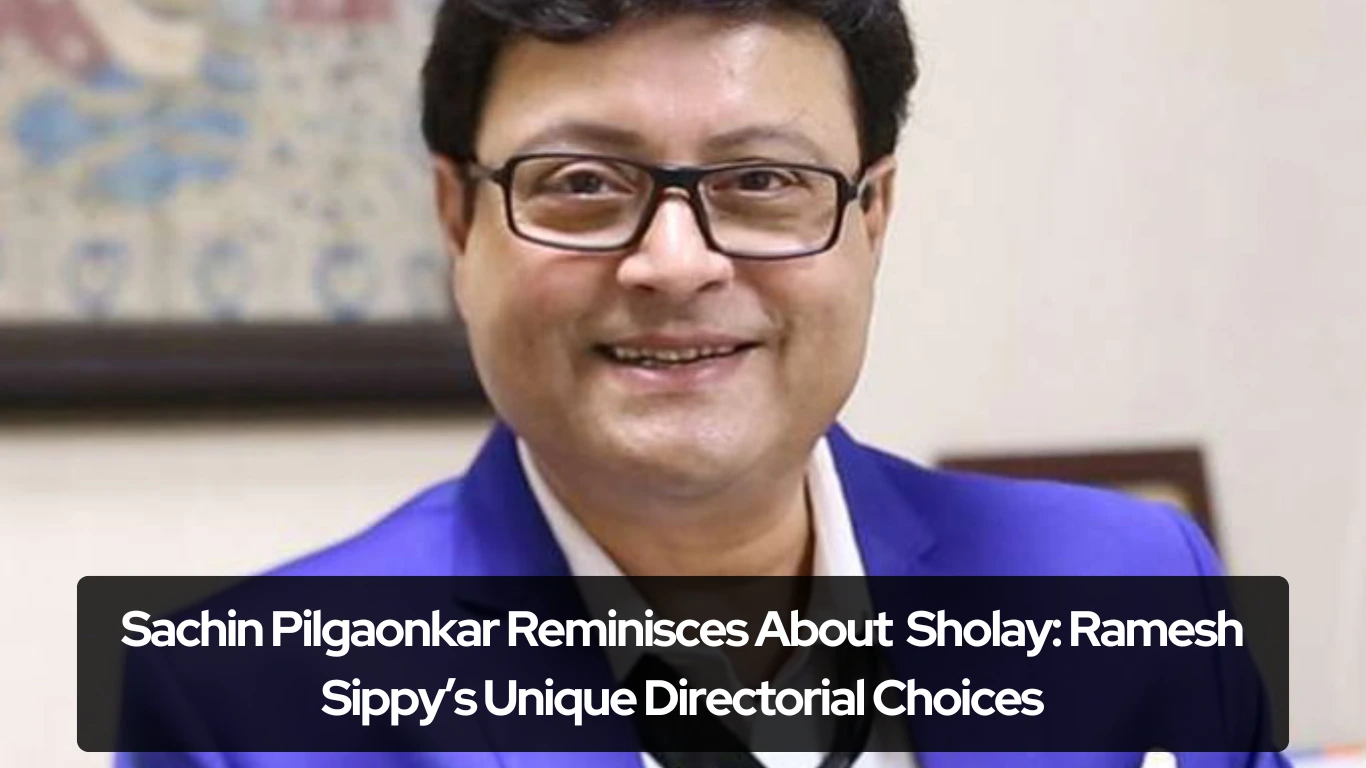When we think about films that have shaped Indian cinema, Sholay (1975) inevitably tops the list. Directed by Ramesh Sippy, this iconic film blended elements of Westerns, action, and samurai movies, creating a genre-defining experience. Featuring a stellar ensemble cast, including Amitabh Bachchan, Dharmendra, Sanjeev Kumar, Hema Malini, and Amjad Khan, Sholay became a cultural phenomenon, setting a new standard for Bollywood.
Though much has been written about this cinematic masterpiece, Sholay continues to reveal untold stories, even decades after its release. Recently, actor-director Sachin Pilgaonkar shared some fascinating behind-the-scenes memories from his time as an assistant director on the film. His insights provide a fresh perspective on how Ramesh Sippy operated during the making of this landmark movie.
Ramesh Sippy’s Delegation Strategy on Set
In a conversation with the YouTube channel Khaane Mein Kya Hai, Sachin Pilgaonkar opened up about how Ramesh Sippy would only come to direct the scenes involving major stars like Amitabh Bachchan, Dharmendra, and Sanjeev Kumar. For other sequences, particularly those involving action or minor scenes, Sippy entrusted the task to a second unit, allowing him to focus on the more critical aspects of the film.
“Rameshji created a second unit to film some of the action scenes that didn’t feature the main actors. These were mostly transitional shots,” Sachin explained. The second unit was led by Mohammed Ali, a well-known stunt director, and action director Azim Bhai, along with two Hollywood stunt coordinators, Jim and Jerry. Since these experts were unfamiliar with Indian cinema, Ramesh needed someone to represent his vision on set, and that’s where Sachin and Amjad Khan came in.
Sachin and Amjad Khan: Unexpected Leaders of the Second Unit
According to Sachin, he and Amjad Khan (who famously portrayed the villain Gabbar Singh) were not particularly busy during the filming of certain scenes. “At that time, Amjad and I were probably the least occupied members of the crew,” he said, laughing. Given their limited involvement in other areas, Ramesh saw an opportunity. Knowing that both Sachin and Amjad were interested in directing, he asked if they would be willing to supervise the second unit.
Sachin humorously recalled this unexpected offer, saying, “Rameshji asked if we wanted to represent him on set. It was like a blind man asking for one eye, and instead, he got two!” This chance not only kept the two actors engaged but also gave them valuable exposure to the filmmaking process from behind the camera.
Filming Iconic Scenes Without Ramesh Sippy
One of the most memorable scenes in Sholay, the train robbery sequence, was shot along the Bombay-Poona railway route near Panvel. What many may not know is that this iconic scene was filmed without Ramesh Sippy’s direct involvement. Sachin and Amjad Khan, under the guidance of the second unit, took charge of filming, ensuring that the action unfolded according to Sippy’s vision.
This behind-the-scenes look reveals the complexity of Sholay’s production. While Ramesh Sippy was deeply involved in directing key moments with the lead actors, his delegation of certain action sequences allowed for smoother production and ultimately contributed to the film’s larger-than-life scale.
A Collaborative Effort Behind a Cinematic Masterpiece
The production of Sholay highlights how collaboration was at the heart of its success. Ramesh Sippy’s ability to delegate and trust his team ensured that even the smallest scenes were executed with precision. The decision to involve Sachin Pilgaonkar and Amjad Khan in overseeing key moments reflects the director’s openness to nurturing talent, even in roles outside their typical comfort zones.
For Sachin and Amjad, this experience offered a glimpse into the world of directing, further fueling their passion for cinema. It also reminds us that behind every blockbuster are countless contributions from individuals who help bring a director’s vision to life.
Conclusion
Nearly five decades after its release, Sholay continues to captivate audiences, not just for its compelling story and legendary performances but also for the lesser-known stories behind its making. Sachin Pilgaonkar’s recollections offer a new layer to the Sholay narrative, shedding light on how Ramesh Sippy’s approach to filmmaking allowed for a truly collaborative environment. These anecdotes remind us of the extraordinary teamwork that brought one of India’s greatest films to the big screen.

